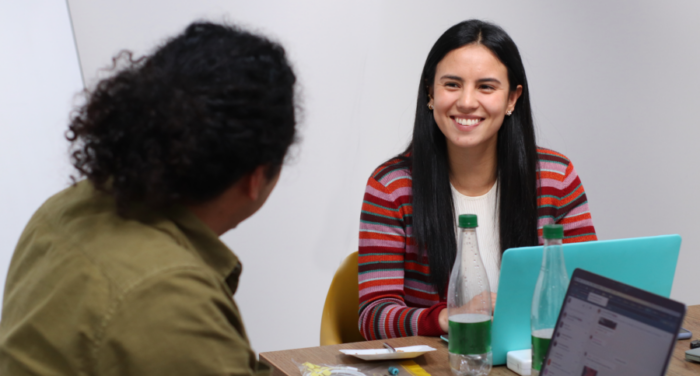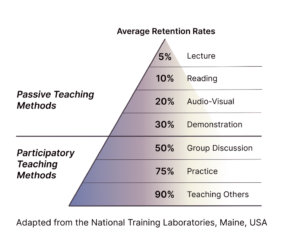Learning by doing is a hands-on approach to acquiring new knowledge, meaning that people must interact with their environment to adapt and learn. It has been demonstrated that the human brain has better retention rates when doing participatory learning methods such as group discussion, exercise by ‘doing the real thing´, and teaching others.
At Empathy, as experts in experience design, we fiercely believe in this mindset and encourage teams to experience real-life tangible processes to improve their experiences and services.
That’s why we bring here 5 reasons to practice Learning by doing:
1. Fosters new capabilities and transparent co-creation within your team
When your brain is exposed to an unknown context, it starts to create new neural connections which are necessary to learn. Collaborating, learning from your environment, and sharing knowledge is the easiest way of doing this. The process leads us to ideate, prototype, test, and implement in order to grow this knowledge. At Empathy, this is how inspiration is born and formed. Discover how we apply learning by doing in our ‘Customer experience and service design’ service.
2. Develops and improves soft skills
There are some skills that can only be developed when immersed in a new context. Teamwork, creative thinking, adaptability, leadership, and listening are skills you only exercise when practicing the activity itself. Every action we do provides a specific learning experience that evokes feelings and emotions that link learnings to our emotional brain. At Empathy, we immerse people into bootcamps, mentorships, masterclasses and workshops designed to stimulate this kind of learning.
3. Create conscientious processes
Reading, writing, observing, and listening separately can become a mechanical and repetitive process for some people. However, when attempting to learn, there must be an orchestrated effort towards reflection, meditation, and consciousness as fundamental elements of these processes. This will end up in experiential learning that will last much longer and have a stronger meaning. It empowers them to share it with others spreading the knowledge all over the team, company, and environment.
4. Promote a hands-on approach to innovation
Teams that come up with innovative ideas are usually involved in learning by doing processes, the act of ‘performing’ the experience gives them a new perspective of what needs to be done and creates groundbreaking solutions for everyday problems. A team doing research with users, uncovers problems and pain points that the KPIs and NPS have been covering up.
5. Contribute to embracing failure
The point about learning by doing is doing, no matter the outcome. Despite the result, it will be a takeaway learned from the experience, allowing organizations and people to have a safe environment to dare to learn by taking risks. There is always space for retrospectives, where team members reflect on their performance, the team flow, and deliverables.
In conclusion, learning by doing allows us to develop new skills and capabilities, changes the process of learning from something passive to active, fosters innovation through recognizing new aspects unseen before, and teaches us to iterate rapidly by learning from even negative experiences. This mindset is lost when people and organizations grow and in some industries it is completely forgotten. At Empathy, we offer Experiential Training which will wake up this mindset in your experience design team and your company making both happier: your inner child and your clients.


